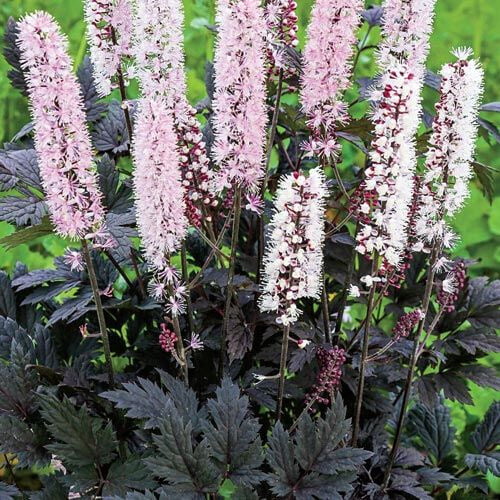
Cimicifuga and Planting: Unveiling the Secrets to Successful Cultivation
- Introduction
- The Intriguing World of Cimicifuga
- Selecting the Perfect Spot for Cimicifuga
- Sunlight Preferences
- Soil Conditions
- The Art of Planting Cimicifuga
- Choosing Healthy Plants
- Planting Depth
- Proper Spacing
- Nurturing Cimicifuga: Care and Maintenance
- Watering Wisely
- Fertilization Facts
- Pruning Principles
- Keeping Pests and Diseases at Bay
- Unwanted Visitors: Aphids and Caterpillars
- Battling Powdery Mildew
- Beyond Beauty: Cimicifuga’s Ecological Impact
- Conclusion
- FAQs
- Can Cimicifuga tolerate full sun?
- How often should I water my Cimicifuga plants?
- Are there different varieties of Cimicifuga?
- Can I grow Cimicifuga in containers?
- Is Cimicifuga suitable for attracting pollinators?
Cimicifuga and Planting: Unveiling the Secrets to Successful Cultivation
In the realm of gardening, few plants evoke as much curiosity and admiration as the Cimicifuga, also known as Bugbane or Black Cohosh. The allure of its elegant, spiky blooms and delicate foliage has captured the hearts of both novice and seasoned gardeners. If you’re eager to venture into the world of planting Cimicifuga, this comprehensive guide will illuminate the path to successful cultivation.
The Intriguing World of Cimicifuga
Cimicifuga, a perennial herbaceous plant indigenous to North America, boasts ethereal white or cream flowers that stand tall against its deeply-cut leaves. This unique combination adds an enchanting touch to any garden, making it a prized addition for horticulturists.
Selecting the Perfect Spot for Cimicifuga
Sunlight Preferences
Cimicifuga thrives in partial to full shade, mimicking its natural habitat under the canopy of trees. While a touch of morning sunlight is welcomed, direct and intense sun should be avoided to prevent leaf scorching.
Soil Conditions
Before planting, prepare well-draining soil rich in organic matter. A generous mix of compost or peat moss will enhance fertility and moisture retention, creating the ideal environment for your Cimicifuga to flourish.
The Art of Planting Cimicifuga
Choosing Healthy Plants
When acquiring Cimicifuga, seek out robust specimens with vibrant leaves and sturdy stems. Steer clear of plants exhibiting yellowing foliage or signs of disease, as they may struggle to establish themselves.
Planting Depth
Transplant your Cimicifuga at a depth consistent with its nursery pot. Ensure that the crown of the plant aligns with the soil surface, striking a delicate balance between exposure and protection.
Proper Spacing
Allocate adequate space between Cimicifuga plants, approximately 2 to 3 feet apart. This spacing allows for optimal air circulation and provides each plant room to grow without competing for resources.
Nurturing Cimicifuga: Care and Maintenance
Watering Wisely
Maintain consistent soil moisture, especially during dry periods. Employ mulch to retain moisture and suppress weed growth, promoting a healthy root system.
Fertilization Facts
In spring, apply a balanced, slow-release fertilizer to nourish your Cimicifuga. Strive for equilibrium, avoiding excessive nitrogen that could result in weak stems and foliage.
Pruning Principles
Regularly trim away dead or discolored foliage and spent flower spikes. This prudent practice encourages fresh growth and maintains a tidy appearance throughout the growing season.
Keeping Pests and Diseases at Bay
Unwanted Visitors: Aphids and Caterpillars
Vigilance is key to thwarting aphids and caterpillars. Regularly inspect your plants and intervene promptly by handpicking or employing gentle insecticidal solutions.
Battling Powdery Mildew
Prevent powdery mildew by ensuring adequate air circulation around your Cimicifuga plants. Embrace morning watering to allow foliage to dry swiftly, reducing the risk of fungal infestations.
Beyond Beauty: Cimicifuga’s Ecological Impact
The allure of Cimicifuga extends beyond aesthetics. Its fragrant flowers beckon pollinators, including bees and butterflies, enriching your garden ecosystem.
Conclusion
Incorporating Cimicifuga into your garden landscape can elevate its visual appeal and ecological significance. By adhering to the principles outlined in this guide, you’ll be equipped to nurture and showcase the captivating beauty of this remarkable plant.
FAQs
Can Cimicifuga tolerate full sun?
Cimicifuga thrives in partial to full shade, as direct sunlight can harm its delicate leaves.
How often should I water my Cimicifuga plants?
Water your Cimicifuga regularly to keep the soil consistently moist, especially during dry spells.
Are there different varieties of Cimicifuga?
Indeed, various species and cultivars of Cimicifuga offer distinct characteristics and appearances.
Can I grow Cimicifuga in containers?
Yes, you can cultivate Cimicifuga in containers, provided they offer ample space and appropriate soil conditions.
Is Cimicifuga suitable for attracting pollinators?
Absolutely! Cimicifuga’s fragrant blooms make it a magnet for pollinators like bees and butterflies, fostering a vibrant garden ecosystem.